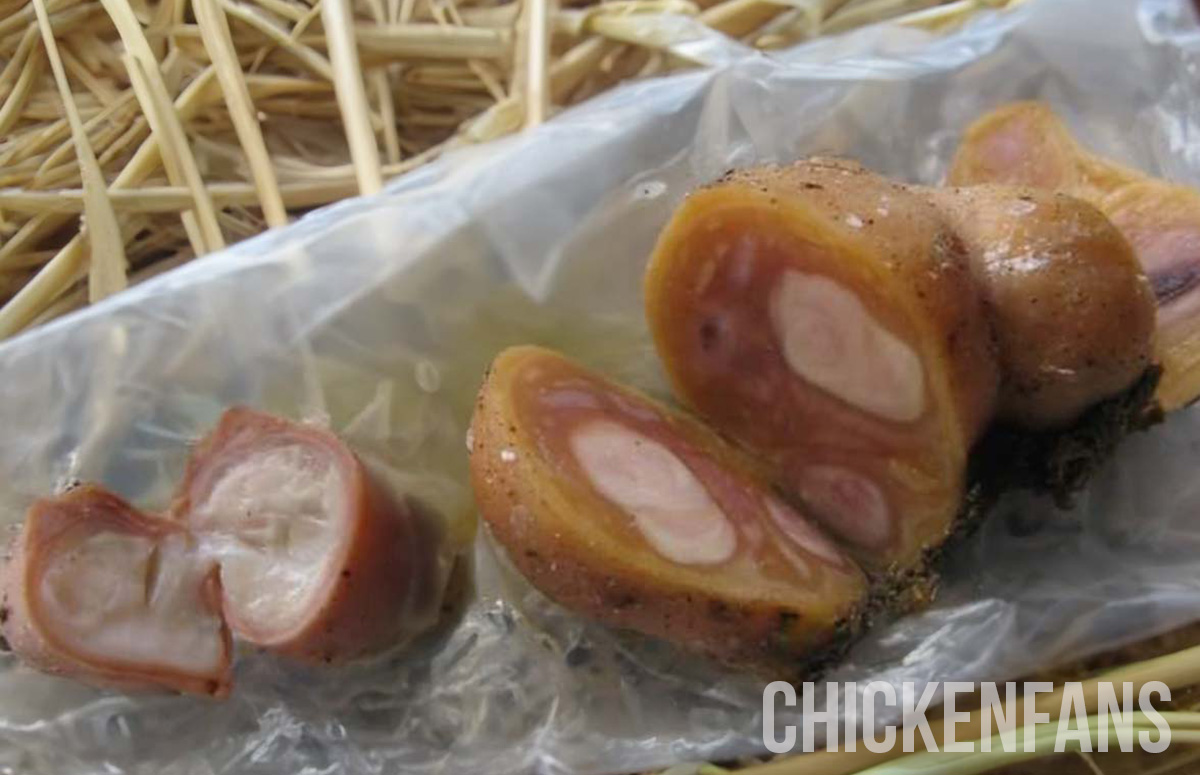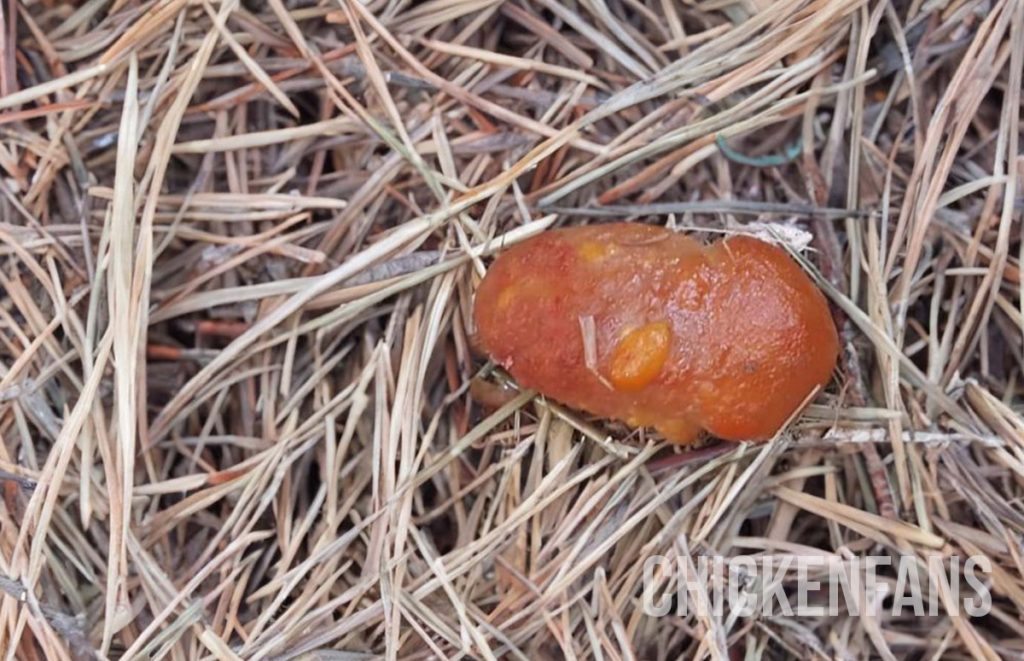Lash Eggs in Chickens: Causes, Treatment & Prevention of Salpingitis


What Is a Lash Egg? · Causes · Symptoms · Diagnosis · Treatment · Prevention · Transmission · Can you eat Lash Eggs? · Are lash eggs contagious? · Metritis
Finding a lash egg in your chicken coop can be pretty scary. These oddballs look like fleshy alien eggs. No need to hit the panic button, but you should know that lash eggs can happen due to reproductive or infectious issues. Prompt response is key.
We’re looking at everything you should know about lash eggs in chickens – from what they are to what they’re caused by, the symptoms they lead to, and how to treat and prevent them.
What Is a Lash Egg?
Lash Eggs (Salpingitis) aren’t real eggs but round-shaped conglomerates of tissue and discharge from a chicken’s inflamed oviduct. Caused by viral and bacterial infections such as Salmonella, MG, and E. Coli, they signal a health issue affecting egg-laying. Antibiotics such as tetracyclines are used to treat lash eggs.

If you are curious enough to cut it open, you will notice it is composed of different layers. The most prevalent layer is the lining of the chicken’s oviduct. Some lash eggs contain purulent discharge, while others might exhibit a mucous or fibrous consistency.
The scientific name of this condition is Salpingitis. The term refers to the inflammation of the oviduct, not the cause of the infection nor the oddly shaped eggs.
What Causes Lash Eggs in Chickens?
Various pathogens can cause Salpingitis, the oviduct inflammation that leads to laying lash eggs. These primarily include bacterial infections:
- Escherichia coli
- Mycoplasma gallisepticum (causing Chronic Respiratory Disease)
- Salmonella spp
- Streptococcus
- Pasteurella multocida (also known as Fowl Cholera)
Other bacteria may also be involved, such as Enterococcus faecalis, Chlamydia psittaci.
Some viral infections can also cause inflammation of the oviduct, indirectly leading to the formation of lash eggs. For example, Infectious Bronchitis, Newcastle Disease, and Avian Influenza can cause damage to the reproductive tract of hens, potentially resulting in conditions like Salpingitis.
Most pathogens can easily spread within a flock from one chicken to another. It doesn’t help that chickens have a single opening (their cloaca/vent) for mating, egg-laying, pooping, and peeing.
Chickens with a history of high egg production that are mainly fed a diet lacking sufficient vitamins and minerals are more susceptible to salpingitis. Also, obese chickens are more likely to develop salpingitis.
What Are the Symptoms of Lash Eggs in Chickens?
Typical symptoms of Salpingitis are:
- Lash Eggs (fleshy meat lumps)
- Eggs with stress lines if the hen is still laying
- Soft-shell eggs
- Abnormal shaped eggs
- Eggs that have streaks of blood on their shell
- Gradual weight loss
- Depression
- Heavy, enlarged abdomen
- Ruffled feathers
- Excessive thirst
- Labored breathing, mainly when associated with a respiratory infection
- Upright penguin stance
- Sudden deaths in the flock
The following picture shows an egg from a chicken with metritis, which displays visible stress lines.

It can be difficult for a chicken owner to understand exactly what’s wrong as the disease sometimes acts quickly. Still, in other cases, it can take up to several months for the bird to actually manifest a clinical picture.

Diagnosis of Lash Eggs in Chickens
To pinpoint the cause of salpingitis, take your lag eggs to a vet for a precise diagnosis. A vet with access to a microbiology lab will conduct a bacterioscopy followed by a bacteriological examination.
These tests identify the specific pathogen responsible so that the vet can select the correct drugs. Different bacterial strains have various antibiotic sensitivities, and knowing the exact pathogen helps to find the proper antibiotics.
Also, the vet can take an ultrasound to locate the inflammation in the oviduct:

How To Treat Lash Eggs in Chickens
Ideal lash egg treatment includes a detailed diagnosis and depends on the bacteria that cause salpingitis. Often, tetracyclines are the go-to antibiotics, but Amoxicillin, Gentamicin, Penicillin, and Chlortetracycline are also used.
In general, you want to give the chicken a break from egg laying through changes in environment, diet, and hormone levels, using antibiotics and anti-inflammatory drugs (NSAIDs like meloxicam).
Prostaglandins, like PGE2, can help the chicken’s oviduct squeeze out pus, lash eggs, or fluid that might be stuck in there. These prostaglandins act like hormones. However, care is needed as strong contractions could cause a rupture of the oviduct.

Combining this therapy with retrograde flushing of the oviduct may be attempted for breeding birds. Retrograde flushing is a medical procedure where saline is passed in via the vent to remove any blockages or buildup of material.
Despite some potential short-term success, the problem often returns. The definitive treatment requires surgical removal of the uterus and oviduct (salpingohysterectomy).
Treat the Entire Flock
After your vet prescribes the antibiotic, you should consider administering it to the entire flock. If one of your chickens came down with a bad case of salpingitis, chances are that the rest of your birds are on the same path.
In the end, even if the chicken affected by the bacterial infection and salpingitis does improve, likely, the bird will never be capable of laying eggs the same as before.

Home Remedies for Lash Eggs in Chickens
Your vet will recommend against any home remedies for lash egg production that you might have read on the internet for a good reason. There is nothing more effective to treat a bacterial infection that has caused salpingitis other than using the proper synthetic antimicrobial treatment.
Apart from that, administering probiotics can be beneficial when your birds undergo antibiotic treatment, which can disrupt the normal gut flora. These beneficial bacteria aid in restoring a balanced gut microbiome, promoting digestive health, and fortifying the chicken’s immune system.
How to Prevent Your Chickens From Getting Salpingitis
To protect your chickens from bacterial infections that can lead to salpingitis and thus lash eggs, consider these preventive measures:
- Regularly feed chickens with quality feed.
- Limit treats and table scraps to prevent obesity.
- Vaccinate chickens against common avian diseases.
- Quarantine any birds that are showing symptoms and seek out veterinary assistance.
- Buy chicks or chickens free of Salmonella or Mycoplasma (from NPIP-certified suppliers).
- Take any chicken that has died suddenly to a veterinarian for a necropsy.
- Clean the chicken living space as frequently and thoroughly as possible (including feeders and waterers)
- Remove cluttered droppings from the chickens butt to keep it clean
- If using wood-based bedding, remove soiled shavings daily and replace them entirely every 3-4 days. Scrub boxes weekly, if possible.
- Avoid the preventive use of antibiotics to curb antibiotic resistance. Only administer antibiotics as directed by a vet to treat diagnosed bacterial infections.
Excellent hygiene is by far the best prevention for salpingitis – and other infectious diseases, for that matter. Nesting boxes and coops need to be cleaned as regularly as possible.
Fecal matter can be spread all around the area where your chickens spend their time during the day and even during the night, but it’s paramount for you to remove as much of it as possible.

Most homesteaders use wood-based shavings or bedding as a substrate for their chickens. If that’s your case, we recommend picking up the soiled shavings daily and replacing them with clean bedding.
Once every 3-4 days, change the shavings entirely, and if the season allows you to, give the boxes a nice scrub once a week.
Is Lash Egg Contagious to Chickens?
Yes – the bacterial infection that causes salpingitis and lash eggs can definitely be contagious. The level of infectiousness depends on the exact bacteria involved and the circumstances.
If the salpingitis that your chickens suffer from is caused by a bacterium such as Mycoplasma spp., it will likely affect the entirety of the chicken population. This microorganism is exceptionally aggressive and contagious.

One example is Mycoplasma gallisepticum, causing Chronic Respiratory Disease. Once inside the flock, the bacteria spread via direct contact, contaminated food and water, and aerosols. Unfortunately, the infectious agent also spreads through the eggs, making eliminating the bacteria in an infected flock challenging.
On the other hand, if it is an isolated event caused by a strain of E. coli and the affected chicken hasn’t mingled much with the other birds, it’s less likely the rest would catch the disease.
Can you Eat Lash Eggs?
No, eating lash eggs is unsafe! These so-called eggs are nothing like the eggs that healthy chickens lay, so they will not have a yolk and an egg white — instead, they will be a collection of detritus and puss, so they can cause some health complications if eaten.
Are Lash Eggs Contagious to Humans?
Handling a lash egg can be dangerous if you don’t practice good hygiene and wash your hands thoroughly afterward. Use gloves to remove the lash egg from the coop, or wash your hands thoroughly afterward.
While some germs are not transmissible to humans, others, including E. coli, Salmonella spp, and Enterococcus faecalis, can easily cause serious medical issues in humans.
Children, seniors, or pregnant women should never handle a lash egg or come in contact with potentially sick chickens.
Salpingitis vs. Metritis in Chickens
Salpingitis and metritis are both inflammatory conditions causing lash eggs, but they affect different parts of the reproductive system.

Our human reproductive system comprises fallopian tubes (oviducts) and the uterus. Infections are diagnosed as salpingitis and metritis, respectively. Chickens have a combined organ – the oviduct – that consists of the infundibulum, magnum, isthmus, and uterus (also known as the shell gland).
In the context of chickens, salpingitis refers to inflammation along the oviduct, including the uterus. Although metritis technically refers to an inflamed uterus, the term salpingitis is usually used in poultry.
Summary
Lash eggs in chickens result from salpingitis, meaning the inflammation of a bird’s oviduct. This disease can be a result of bacterial or viral infections and can spread to other chickens through fecal matter or sharing feeders and waterers.
While there are treatment options for salpingitis, if the therapy is not initiated early on in the progression of the disease, the prognosis for the affected chickens is poor to moderate at best.
Almost all chickens affected by salpingitis lose their typical egg-laying capabilities. Preventing this condition, along with others, is best done by practicing excellent hygiene in and around the nesting box and the area where chickens lounge during the day.
If you’d like to learn more about chickens’ health issues, symptoms, treatments, and prevention methods, check out our Health Page. Our Symptom Checker can be helpful to any homesteader or chicken aficionado, and our Chicken Behavior list can assist chicken owners in identifying possible medical conditions.
Related Articles
- Chronic Respiratory Disease: a widespread bacterial respiratory disease caused by Mycoplasma gallisepticum (MG)
- Chicken Reproductive System: an overview of the reproductive system of hens and roosters
- Soft-shell Eggs: 12 reasons why chickens can lay soft shell eggs
- Probiotics for Chickens: the health benefits of different probiotic strains that can be used effectively in poultry
- Fowl Cholera: a widespread severe bacterial disease caused by Pasteurella multocida
- Biosecurity for chickens: best practices on biosecurity in poultry farming
Frequently Asked Questions
Lash eggs aren’t real eggs but rather round-shaped tissue masses and discharge from a chicken’s inflamed oviduct. They’re a sign of a health issue, often caused by various infections.
Lash eggs take on an egg-like shape because they are formed in the hen’s oviduct, the same passage where a normal egg is formed. As the body tries to expel the inflammatory material resulting from salpingitis, the oviduct shapes it much like a regular egg.
Salpingitis is an inflammation of a chicken’s oviduct, often due to infection. A lash egg, a symptom of this condition, is an abnormal mass of tissue and pus from the inflamed oviduct, not a true egg. If a chicken is laying lash eggs, it clearly shows she suffers from salpingitis.
Lash eggs are treated with antibiotics like tetracyclines, amoxicillin, gentamicin, penicillin, or chlortetracycline to address the underlying bacterial infections causing the lash eggs.
It’s called a “lash egg” due to its lash-like layers of tissue and discharge from an inflamed oviduct, despite not being an actual egg.
While lash eggs don’t spread, the infections causing them, such as Salmonella or E. Coli, can easily transmit among chickens in a flock.
Yes, chickens can survive lash eggs (salpingitis) with proper veterinary care and antibiotic treatment, but they might not regain full egg-laying capabilities.
The lifespan after laying a lash egg varies and depends on the underlying condition’s severity and treatment effectiveness.
Chickens can recover from the condition causing lash eggs with appropriate treatment, but the impact on their egg-laying abilities may be permanent.
Your chicken likely laid a lash egg due to an infection causing inflammation in the oviduct, leading to these abnormal masses.
While handling lash eggs isn’t typically dangerous, some of the germs causing lash eggs can potentially cause illness in humans, so good hygiene is crucial. Gloves should be worn, or hands should be thoroughly washed after handling.
No, lash eggs are not edible. They’re not real eggs but inflammatory masses from a chicken’s oviduct, often filled with pus, fibrous tissue, or mucus. Consuming them poses potential health risks.
Metritis refers to inflammation of the uterus in chickens, while salpingitis is an inflammation of the entire oviduct, although, in poultry medicine, the term salpingitis is often used for both conditions.
Resources
- Escherichia coli salpingitis and peritonitis in layer chickens: an overview, W.J.M. Landman, R.A. Cornelissen, 2006: https://pubmed.ncbi.nlm.nih.gov/17263015/
- Necrotizing Salpingitis by Fowl Adenovirus in a Backyard Hen, Viviana Gonzales-Astudillo et al, 2022: https://pubmed.ncbi.nlm.nih.gov/35510474/
- Co-Infection of Escherichia coli, Enterococcus faecalis and Chlamydia psittaci Contributes to Salpingitis of Laying Layers and Breeder Ducks, Huanxin Fang et al, 2021: https://www.ncbi.nlm.nih.gov/pmc/articles/PMC8232623/
- Reproductive tract diseases in female backyard chickens (Gallus gallus domesticus) – Diagnostic imaging and final outcome during a decade, Cornelia Konicek et al, 2020: https://pubmed.ncbi.nlm.nih.gov/32325525/
- Salpingitis in poultry. Prevalence, bacteriology, and possible pathogenesis in egg-laying chickens, M. Bisgaard, A. Dam, 1981: https://pubmed.ncbi.nlm.nih.gov/7232151/

Dr. C. Vulpe is a credentialed veterinarian and holds a Ph.D. in veterinary oncology. With over a decade of experience in veterinary medicine, Dr. Vulpe loves giving practical and easy-to-follow advice to homesteaders, chicken lovers, and pet owners across the world. Her scientific work has been showcased in multiple publications.





















